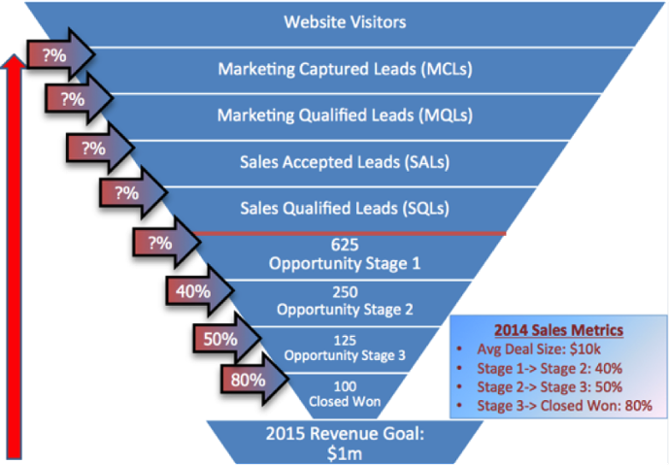Recently I was talking to someone starting his career in product marketing, he had one simple question: 'What are the best practices for product marketing?' It was a good question and a hard one to answer, not because I didn’t know, it’s that I knew way too much to give a simple answer, having done this for a while - the curse of knowledge!
There’s a huge body of work on the broader product marketing role, from, Moore, Christensen, Cialdini, the Heath brothers, Dixon and others, you can’t sum all that up instantly.
But none of that matters. So here’s a…
Simple (actually simplistic) answer
As product marketers, it’s our job to deliver a crisp answer, whether to a reporter or a rep with limited time, so I gave him one: Distill simplicity from complexity. A past manager told me that a few years ago and it’s got a lot of wisdom packed in.
The best companies distill their value props into simple, memorable statements that are relevant to business needs. They're backed by credible, concrete proof points connected to technical reality and its often product marketers crafting the message maps that connect value props to proof points.
We get firehosed (hopefully!) with newly released features from our engineering teams. It’s our job to determine how to coherently fit those into our existing message map, so we have yet another proof point to supporting our simple, memorable value prop.
Distillation in action
For example, Amazon Web Services’ value prop can be summarized in one word: reinvent. It’s no coincidence their main conference has the same name, how so? AWS lets you reinvent your existing business using software so you fend off competitive pressures, retain and grow an increasingly digital and demanding customer base, and ultimately thrive.
“But how do you help me reinvent my business?” a prospect asks. That’s the perfect invitation for Amazon to dive into AWS capabilities but it all starts with a root concept: reinvent, and obviously, it’s worked.

But back to our new product marketer.
There’s much more to this job than just clever positioning and it wouldn’t do him to stop at the glib answer above, fundamental though it may be.
So here’s an attempt to provide…
The deeper answer
First, to frame, it’s worth noting that at its core product marketing is a handful of 'organization glue' functions in a company. It sits between product management, sales, the rest of marketing and the broader market (press, analysts, online properties, and customers). On one hand, this makes product marketing a very interesting role since you get to work with a wide range of different people, problems, and processes, it engages more parts of the mind than many other roles. But on the other hand, this diversity of internal customers can lead to a wide range of competing demands, you’re pulled in many directions, so managing expectations is critical.
I’ve found this article to be a great explainer on why to do that.
To summarize the article: overachievers work hard — though not harder than others. They succeed by doing less, by focusing on the most critical tasks — and then hitting those critical tasks out of the park.
So, are some specific tips on how to implement these guidelines in the context of product marketing.
First, eat a frog.

In other words, do your hardest task first, which for many product markets is…
Sales Enablement
Set up an internal contract with sales, why sales first? They’ll almost always be the most demanding internal client. If you’re not careful, they can suck all your time, leaving you unable to address needs from other teams, and still be unsatisfied.
To do this, work with sales leadership and agree to what constitutes a sales training cadence that is sustainable for you and satisfactory for them. This should include both update training to the entire sales team, and for onboarding for new hires. My rule of thumb is that someone doing only sales enablement can sustainably do two good sales enablement sessions a month. Also, agree on what is the minimum acceptable rating score for each session, so the goalposts for quality are crystal clear, my rule of thumb for this is 4.0 or higher on a 1–5 scale.
Have sales suggest the topics for these training sessions, once you’ve described the product roadmap to them, they’re the customer here (obviously, push back on things not workable). This ensures you’re pointed in the right direction, and not wasting time on things that sales leadership doesn’t want.
Have sales commit to having a sales leader in every sales training, so attendees don’t slack off. Nothing is more frustrating than working hard to prepare great enablement content only to have reps ignore you.

Better yet, get a sales leader to deliver the training material that you prepare, you can bet the reps will pay attention! Plus, you make your internal customer look good in front of their team (getting a sales leader to deliver isn’t needed for new hire training; new arrivals are eager and will listen to a lowly product marketer, for now).
Do a survey after every session, it should have three components: numerical rating of the session, free-form text feedback, and certification questions. Ideally have sales ops conduct these surveys for you (remember: do less), share the findings with you, and track the result trends over time, but if they won’t, do it yourself it’s that important. With this information, you can report to sales management — likely your most important internal customer — on the state of sales training. Is it working overall or not? What’s working and what’s not? Is the content getting through? How to improve?
If everything’s working, you can take credit, if it’s not, you have information to be part of the solution - tails you win, heads they lose.

Great, you’ve gotten your toughest internal client covered, you’ve put out the fire or better yet, prevented one from flaring up in the first place. Now what?
Get data-driven
You need to know where to focus, at a high level, to do this, ensure you have an overall Go-To-Market Funnel setup. Ask Marketing Ops or Demand Gen if they will do (or have done) this (again - do less.) But if not, invest the time to do it yourself, because it can help you taper back on entire areas of work.
To be clear: funnels are not at all new, but using them to prioritize where to focus product marketing isn’t done nearly often enough, in my experience.
There are dozens of different funnel models, but I like this one, described here, since it balances simplicity and comprehensiveness.

While this might look intimidating at first, the information shouldn’t be too hard to capture — hopefully just three systems of record:
Website visitors: get this from Google Analytics
Unqualified leads: all leads gathered from all sources — product trials, content regwalls, events, webinars, etc. Any lead, regardless of lead score.
MQLs: Marketo should also have all leads that are scored highly enough to be passed to sales.
SQLs: in a CRM like Salesforce.
The goal isn’t a ton of detail, but rather to get a bird’s eye view of your go-to-market motion and know where to focus, so you can do less.
Overall you want to look for dents in the funnel where conversion rates suffer and use that to drive priorities, for example, suppose you are getting lots of website visitors that isn’t converting to MQLs, focus more on helping the Demand Gen team and spend less time on web content.
You need to ensure that senior leadership buys into this data-driven approach, this must include your boss and their managers up to the head of marketing, the leaders of the sales and product organizations, and even the CEO if the company is small enough.
But let’s go deeper.
Website traffic
Website traffic should be measured by number of visits, unique visitors, time on page, and bounce rate. Analyze it by source (domains, direct, etc.) and content type (home page, product pages, blog tags, etc.) — all available in Google Analytics. Some examples of how this can be actionable for product marketing:
Product versus blog traffic split
When I was at the SpringSource division of VMware and Pivotal, blog traffic dominated overall site traffic, so that’s where product marketing focused its time. At other companies, the blog was just a tenth of traffic, so it made sense to focus more on getting evergreen content, like product pages.
Traffic quality
At some companies, I’ve seen that YouTube drives a small amount of traffic that is highly engaged, this argues for investing more in our video content.
Investment versus traffic payoff
At one company, I’ve seen that a 5x increase in Twitter followers — via a paid follower campaign — has had zero impact in traffic from twitter.com, this argues for scaling back our efforts on that platform.
Performance versus competition
Use SimilarWeb (or similar services) to track your traffic growth versus that of similarly-sized competitors. If you’re lagging in growth, ask what you can do to improve.
What funnels won’t show
It’s important to know what Google Analytics can’t tell you, which is traffic you’re NOT getting. So if your traffic is not growing as much as you’d like — again, use SimilarWeb to get a sense of how much your market overall is growing — do this: Type a brand search “your company name” into Google, as any engaged prospect would do. Research demonstrates the Yelpification of B2B sales: typical corporate buyers do lots of online research before reaching out to a salesperson. Look at the top 5–10 results, and ensure that your content on those is as optimal as possible.
A couple more leading indicators that feed into website traffic: number of analyst briefings/quarter, number of tier one press mentions per month (versus main competitors), ratings on various review websites like Capterra.
Lead Management
Here the outcome KPI should be MQLs, determine what are the biggest sources of MQLs. At most companies I’ve been at, these are product trials, then focus on improving those.
There are lots of smart demand gen folks that know how to optimize campaigns and tactics, especially those that involve advertising, events, webinars, gated content, and lead nurturing. But interestingly, what’s often the most important element for MQL delivery — product trials — is the most neglected by demand gen teams. It’s not their fault; their expertise simply lies in other areas than your product, so this is an area where product marketing can help, here’s how:
Improving product trials means removing points of friction that hinder adoption and getting users to use functionality that increases likelihood to buy (accelerant features), so work with your product team to instrument the product, so you can tell who is using what functionality how often, Mixpanel is one of the tools available to do this. Then, message to product trial users to get them to use accelerant features, work these into your lead nurturing campaigns, in-product messaging, and product login page.
Sales Enablement
Here the outcome KPI is obviously revenue or more precisely, bookings, in addition to sales enablement sessions, sales will ask for numerous collateral pieces, work with sales leadership to prioritize these requests, and have them approve the prioritized list of what gets worked on next.
Better yet, use products like Clearslide, Highspot, or Seismic to understand which content is most used by your sales team and customers. This keeps sales accountable for their content requests, because an ask for a piece that isn’t heavily-used means wasted investment. Taking this a step further, some product marketing teams put together two week sprints to knock out items, which sales has prioritized from a larger product marketing backlog. Sometimes the prioritization might be a no-brainer, for instance, if everyone’s telling you the sales deck is out of date. Once the fires are put out to help with prioritization look at your funnel to determine where your sales opportunities fail to convert from one stage to the other, then ask sales how product marketing can help improve that conversion rate — content, enablement session, etc. and deliver accordingly.
For example, if early stage opportunities aren’t converted into middle stage, perhaps that means product marketing should craft call scripts for SDRs, or if mid-stage opps aren’t converting, perhaps that calls for an ROI calculator, demo videos, or more customer stories — all commonly used content at the middle of a sales cycle.
Summary
There are often many, many pressing demands for product marketing, what’s essential is figuring out which ones are most essential and ensuring that you can get organizational buy-in to focus first on those items. So you can focus on what’s critical, get home faster — and do less.


















 Follow us on LinkedIn
Follow us on LinkedIn




.svg)
Start the conversation
Become a member of Product Marketing Alliance to start commenting.
Sign up now